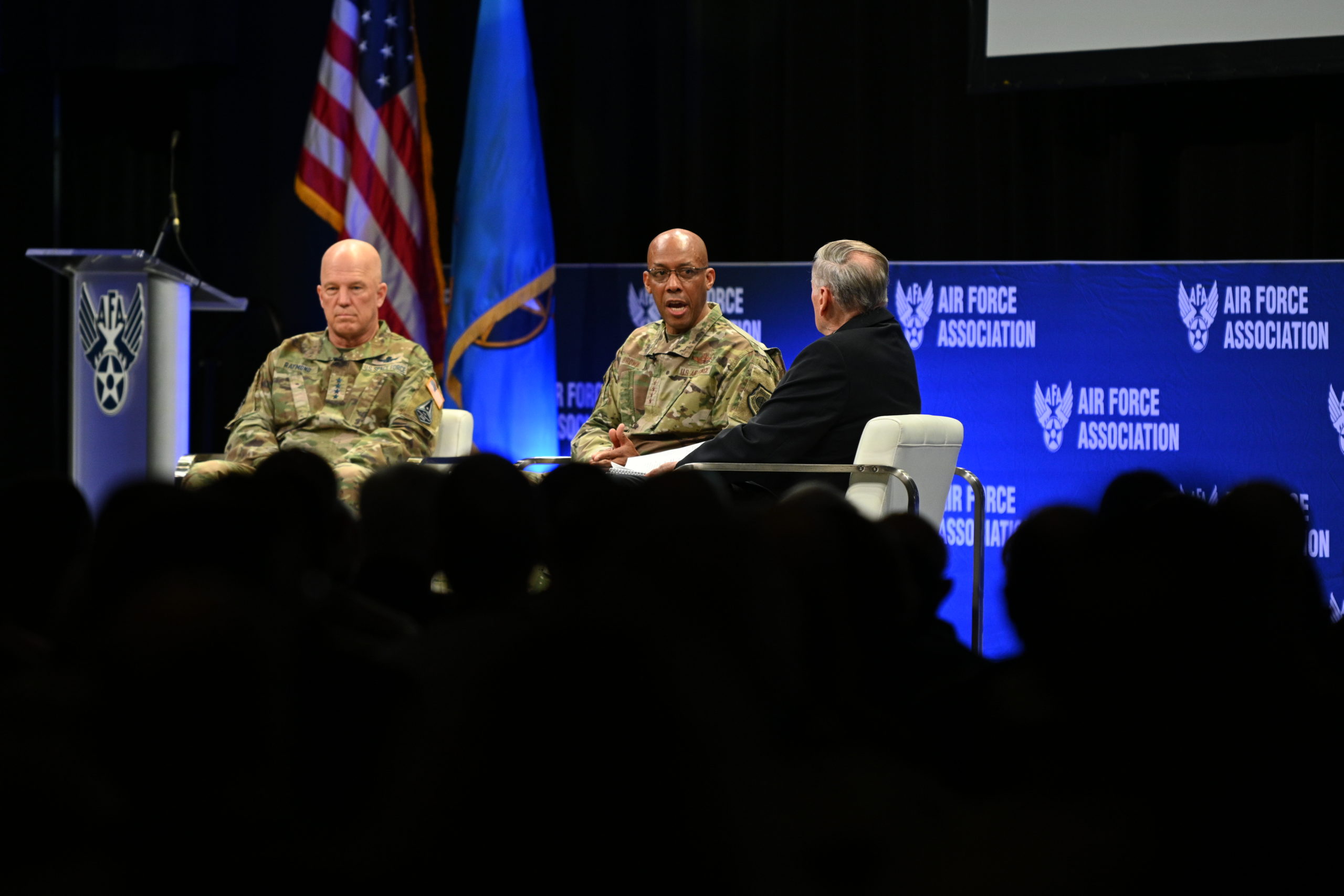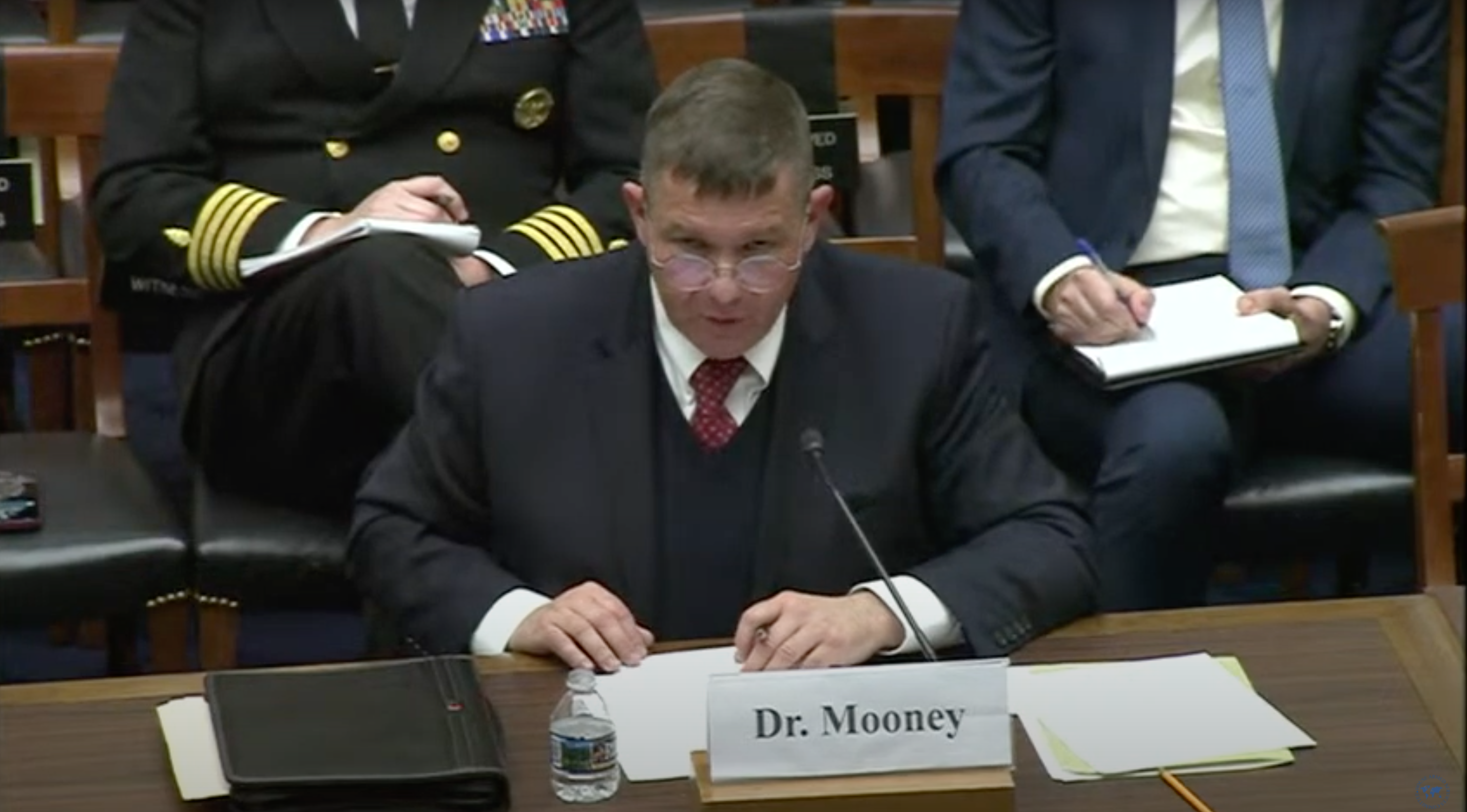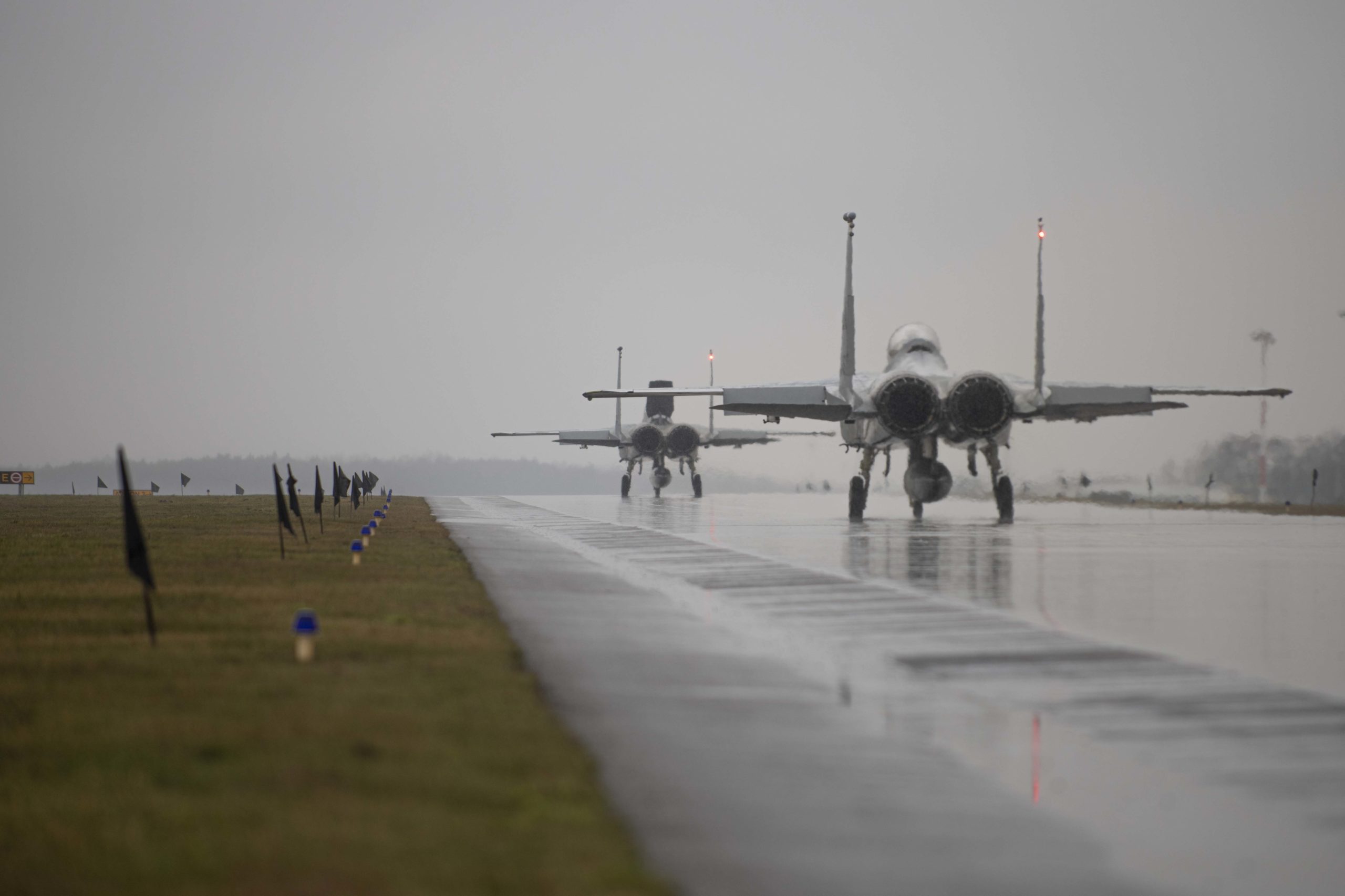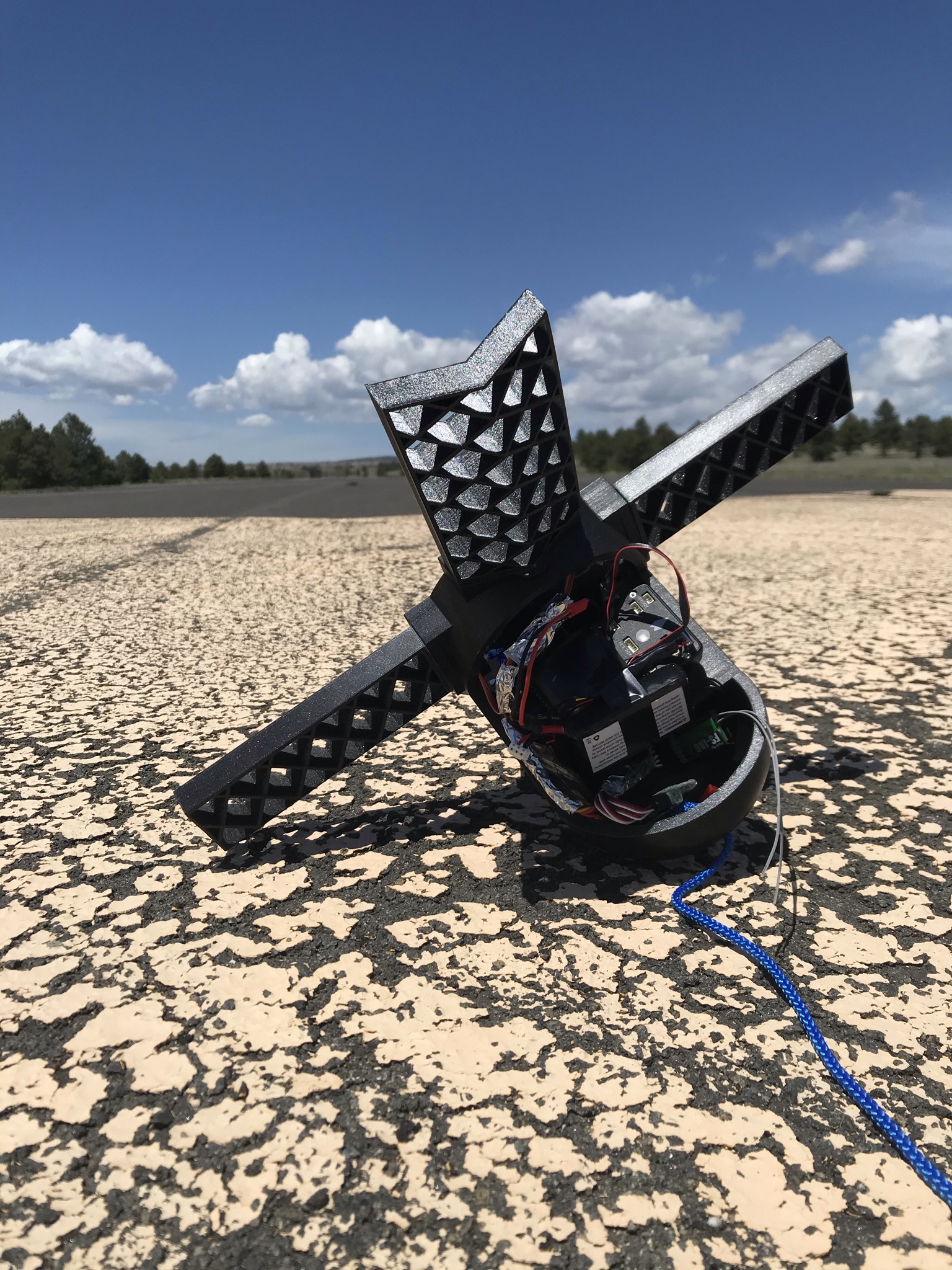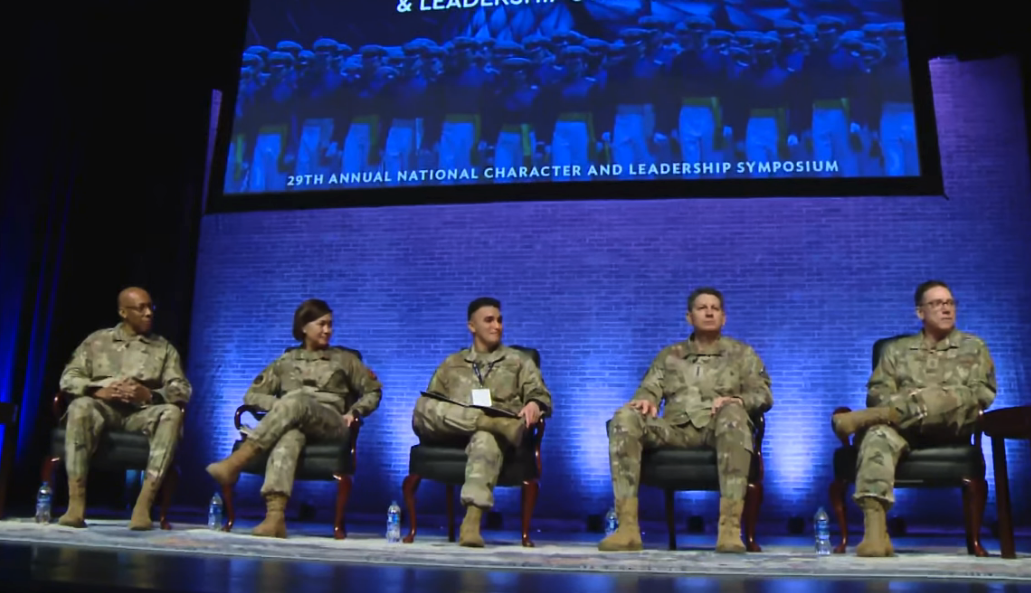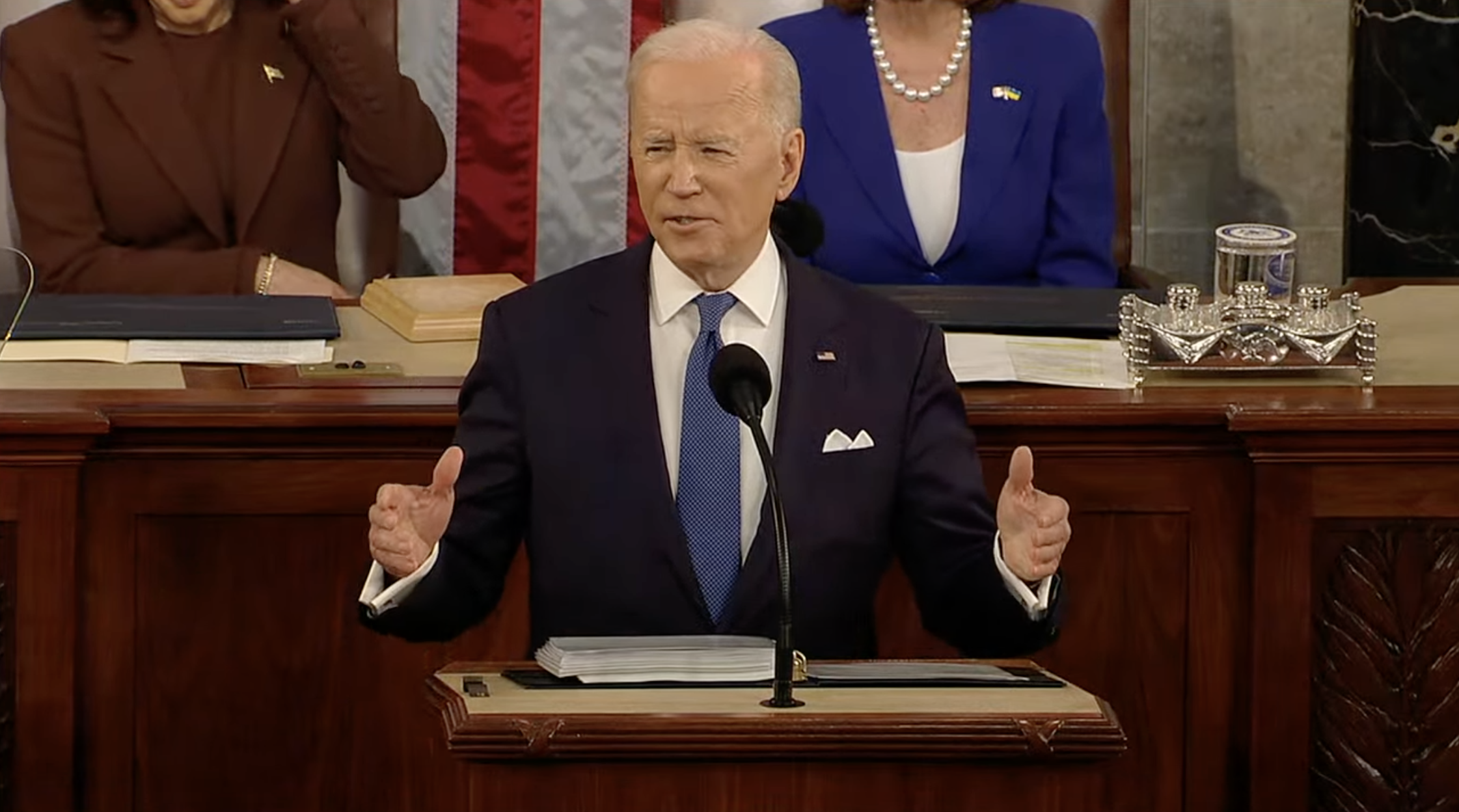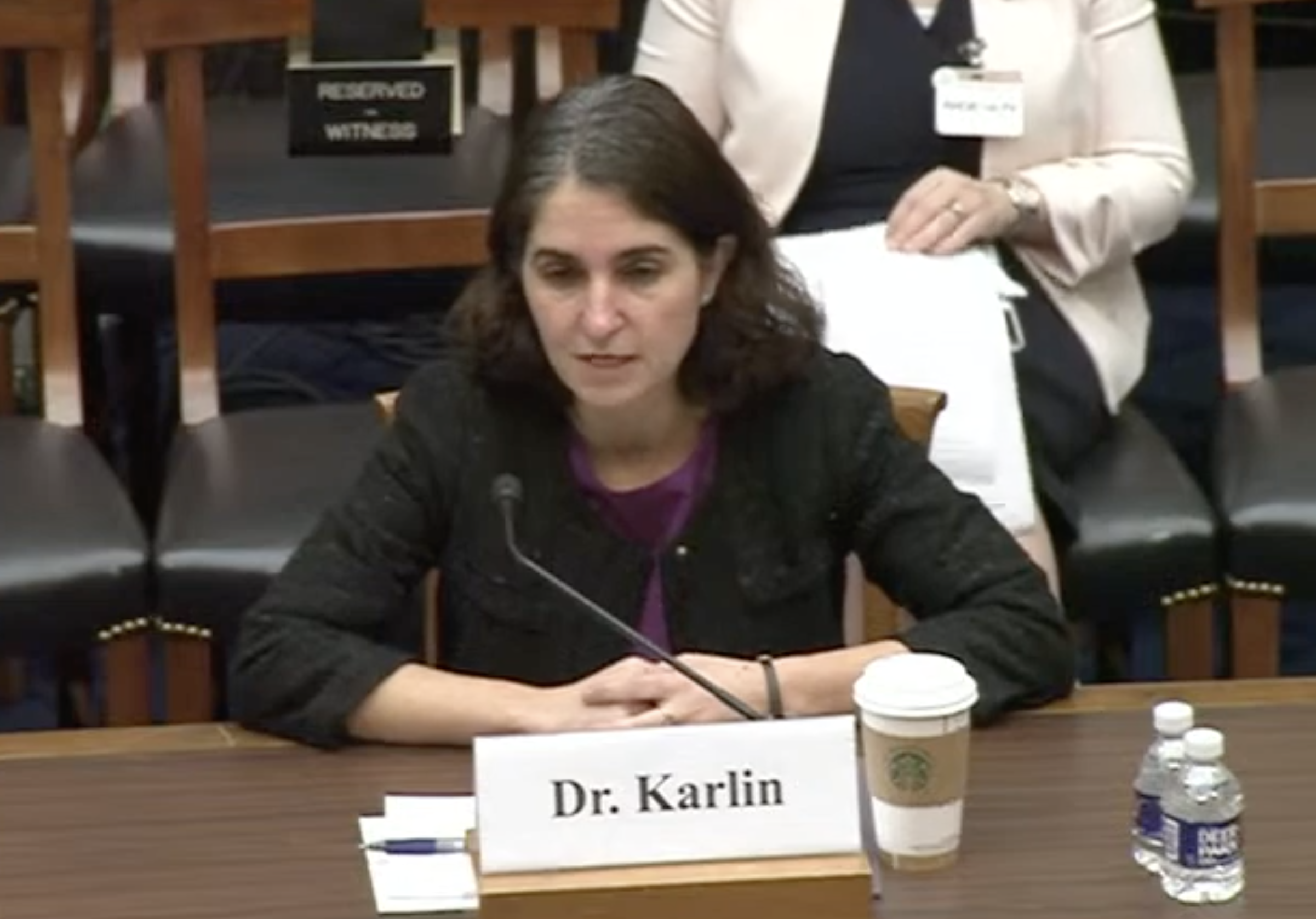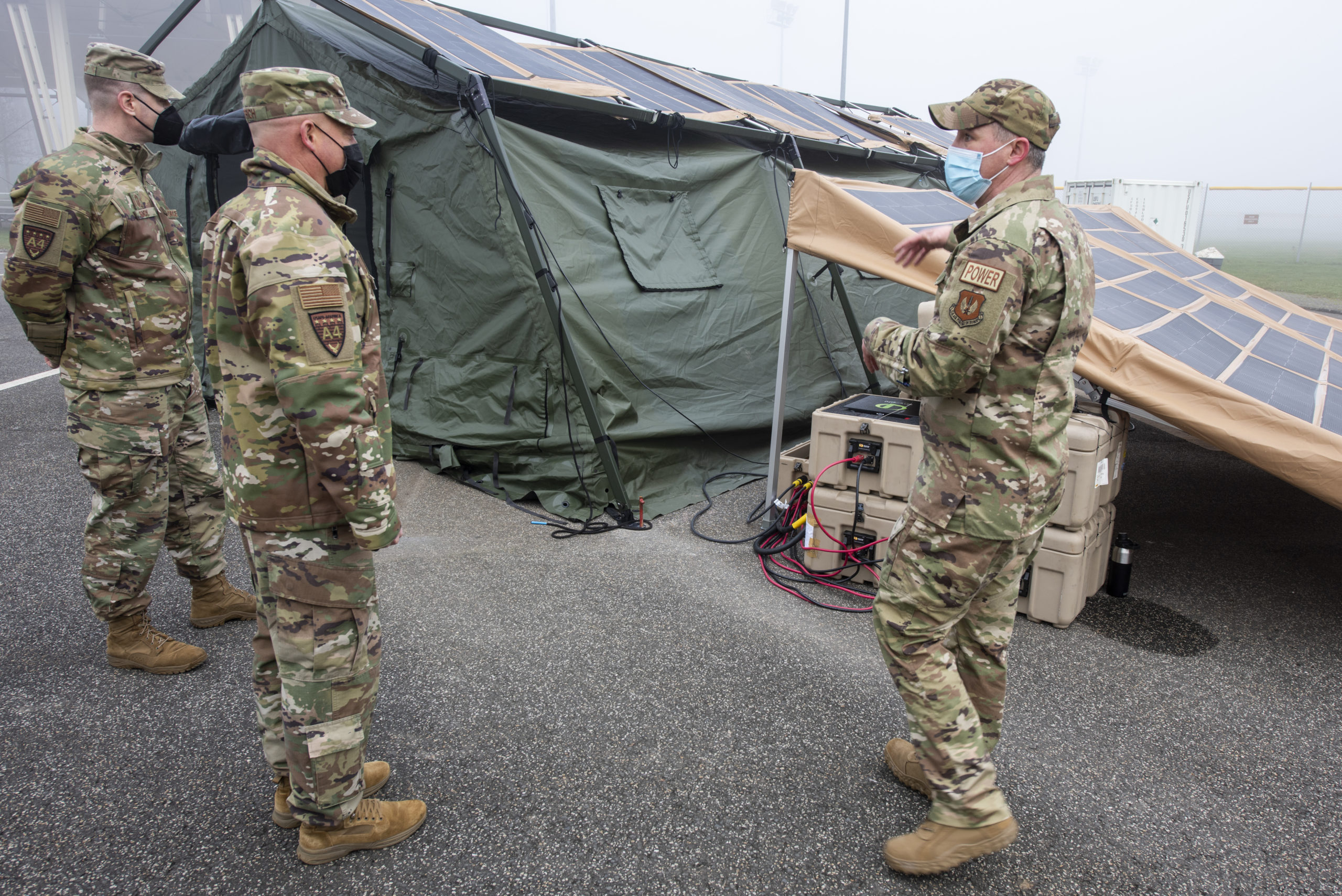With just over a week left before the latest continuing resolution to fund the federal government runs out, the service Chiefs of the Air Force and Space Force bemoaned the frequent use of CRs to keep the Pentagon funded, calling the practice “bad,” “frustrating,” and “absolutely devastating.”
Air Force Chief of Staff Gen. Charles Q. Brown Jr. and Space Force Chief of Space Operations Gen. John W. “Jay” Raymond, making a joint appearance at the AFA Warfare Symposium in Orlando, Fla., didn’t appeal directly to Congress to pass a new budget for fiscal 2022 like they did during a January hearing in front of the House Appropriations defense subcommittee.
But they painted a grim picture for the Department of the Air Force if continuing resolutions continue to be commonplace in the years to come.
“I almost want the whole audience to repeat after me: CRs are bad,” Brown told former Chief of Staff retired Gen. John P. Jumper, who served as moderator for the discussion. “They’re frustrating, just the aspect of what we’re not able to do because of a CR.”
Under continuing resolutions, funding is frozen at the previous year’s spending levels. In the past 13 fiscal years, the Pentagon has started the year operating under a CR 12 times.
“If you add up all the time we’ve been in a CR, it’s been over three years,” Brown said. “ … If we’re in a race with somebody, we’ve just spotted them three years. We can’t keep doing this.”
As continuing resolutions have become a regular feature in the budgetary process, “we’ve gotten good at bad behavior,” added Raymond. “We’ve gotten good at pushing contracts to the end of the year. We’ve gotten good at doing things that we had to do because we didn’t have the resources or a law that allowed us to do it.”
A Government Accountability Office report from September 2021 found that across the Defense Department, the services “tended to obligate … a lower percentage of their total annual obligations in the first quarter of the fiscal year—when DOD is most likely to be operating under a CR.”
The impact is especially key for the Space Force, Raymond said.
“A yearlong CR for the Space Force is a $2 billion hit on the top line,” but for the new service, which Raymond likened to a startup company, “if … you can’t do new starts, it’s really difficult,” he noted.
The continuing resolutions are also preventing the startup Space Force from expanding. Raymond warned back in September 2021 that without a budget, the transfer of 350 new Guardians, as well as units and missions, including satellite communications capabilities from the Navy and Army, would be delayed.
More than five months later, those units and missions are still waiting.
“I’ve been on the road here recently visiting them overseas and in CONUS,” Raymond said. “They’re eager to come. We can’t bring them in until the law is passed. So it’s something that we’ve got to get done. A yearlong CR would be absolutely devastating to us.”
And though the Air Force may be more established, it needs funding to acquire new systems and build up its capabilities, Brown argued, especially as demand for those capabilities continues to grow.
“I feel like a chew toy between different combatant commanders, where they’re pulling and asking for more Air Force capability to go to different places because the Air Force is the one service that can get there faster than anybody else, except for the space portion,” Brown said.
To that end, Brown said the service needs to be “a little more bold.”
“We’ve got to speak up for ourselves and show what the impact is. And that’s something I don’t know that we’ve done very well,” Brown added. “It’s something I’m focused on. … We’ve got to do a better job of talking about what happens to our readiness if we continue to use our capabilities at the rate we do and we don’t modernize.”
Beyond modernizing and building out new systems, CRs bring other, more intangible effects, Brown said.
“We’ve got to get past this because it slows us down from being able to have trust and confidence with our Airmen, trust and confidence with industry, and trust and confidence with allies and partners to be able to provide the capability we’re going to require as we move forward,” Brown said.
With the latest CR set to run out on March 11, Congress is currently reckoning with how to finally push through an “omnibus” package funding the entire government.
Democrats and Republicans previously announced they had reached a “bipartisan breakthrough” on such an agreement, but following Russia’s invasion of Ukraine, the two sides have differed on how to go about passing an aid package for the Ukrainians. Democrats want to include the package in the omnibus, while Republicans want the two separated. There is also debate as to whether the aid will go to the Pentagon to cover previous spending or for the purchase of new weapons.
Yet the need for such aid underscores the danger of more continuing resolutions, Jumper argued from the stage.
“It’s hard to accelerate change or achieve the speed of relevance if you don’t have the means to do the acceleration,” Jumper said. “And I just hope that you know the current events of the world can help us realize that this acceleration and these developments … we need to move on with it.”
